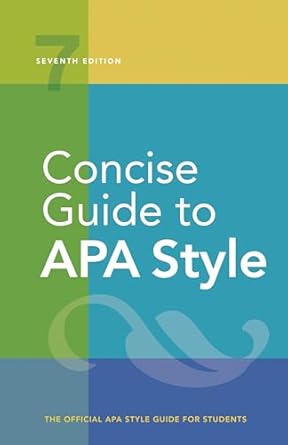[toc]
abbreviations in writing a guide to clear communication
Concise Guide to APA Style: 7th Edition (OFFICIAL)
Page 135 Review
The Nuances of Abbreviation Usage in Academic Writing: A Critical Review
This ebook excerpt delves into the often-murky waters of abbreviation usage in academic writing, providing valuable guidance on when and how to employ these linguistic shortcuts effectively.
The advice, rooted in APA style, emphasizes clarity and conciseness, urging writers to navigate the abbreviation landscape with careful consideration.
The Double-Edged Sword of Abbreviations
The excerpt begins by acknowledging the potential benefits of abbreviations, stating that “considerable space can be saved and cumbersome repetition avoided.” However, it quickly cautions against overuse and inappropriate application.
The key takeaway is that the effectiveness of an abbreviation hinges on its clarity and recognizability within the specific context.
“For example, the abbreviations ‘L’ for large and ‘S’ for small in a paper describing different sequences of reward (LLSS or LSLS) would be effective and readily understood shortcuts.” This illustrates a scenario where abbreviations enhance readability.
Conversely, the text points out that “writing about the ‘L reward’ and the ‘S reward’ might be both unnecessary and confusing” in other contexts.
This highlights the importance of considering the reader’s perspective and potential for ambiguity.
Overuse and Underuse: Finding the Right Balance
The excerpt tackles the common pitfalls of abbreviation usage: overuse and underuse.
It illustrates the problem of overuse with a compelling example:
“The advantage of the LH was clear from the RT data, which reflected high FP and FN rates for the RH.” This dense sentence, laden with abbreviations, becomes significantly clearer when spelled out: “The advantage of the left hand was clear from the reaction time data, which reflected high false-positive and false-negative rates for the right hand.” This demonstrates how excessive abbreviation can hinder comprehension, negating its intended benefit.
On the other hand, the excerpt addresses the issue of underuse, stating that “if you abbreviate a term, use the abbreviation at least three times in a paper.
If you use the abbreviation only one or two times, readers may have difficulty remembering what it means.” This provides a practical guideline for maintaining consistency and reinforcing the meaning of abbreviations.
However, it also acknowledges exceptions: “a standard abbreviation for a long, familiar term is clearer and more concise even if it is used fewer than three times.” Common abbreviations like AIDS or IQ fall into this category.
Defining Your Terms: A Matter of Context
The excerpt then delves into the crucial matter of defining abbreviations.
It offers a set of rules based on APA style, emphasizing that certain abbreviations, such as “AIDS, IQ,” measurement abbreviations, time abbreviations, Latin abbreviations, or many statistical abbreviations, do not require definition.
This is because their meaning is widely understood and readily accessible.
However, the text stresses the importance of defining all other abbreviations, “even those that may be familiar to your readers (e.g., ‘RT’ for reaction time or ‘ANOVA’ for analysis of variance).” This seemingly cautious approach underscores the importance of clarity and consistency, ensuring that all readers are on the same page.
The excerpt concludes with a firm rule: “After you define an abbreviation, use only the abbreviation; do not alternate between spelling out the term and abbreviating it.” This reinforces the importance of consistency and avoids potential confusion.
Conclusion: Abbreviation as a Tool for Clarity, Not Obfuscation
In conclusion, this excerpt provides a comprehensive guide to using abbreviations effectively in academic writing.
It emphasizes the importance of striking a balance between conciseness and clarity, urging writers to consider the reader’s perspective and the specific context of their work.
By following the guidelines outlined in this excerpt, writers can leverage abbreviations to enhance the readability and impact of their writing, rather than detract from it.
The core message resonates: Abbreviations should be tools for clarity, not obfuscation.
Buy full ebook for only $18: https://www.lulu.com/shop/american-psychological-association/concise-guide-to-apa-style-7th-edition-official/ebook/product-rmzpq54.html?page=1&pageSize=4
Abbreviations In Writing A Guide To Clear Communication
Read more: Citing Sources: Mastering Reference Elements for Accuracy

